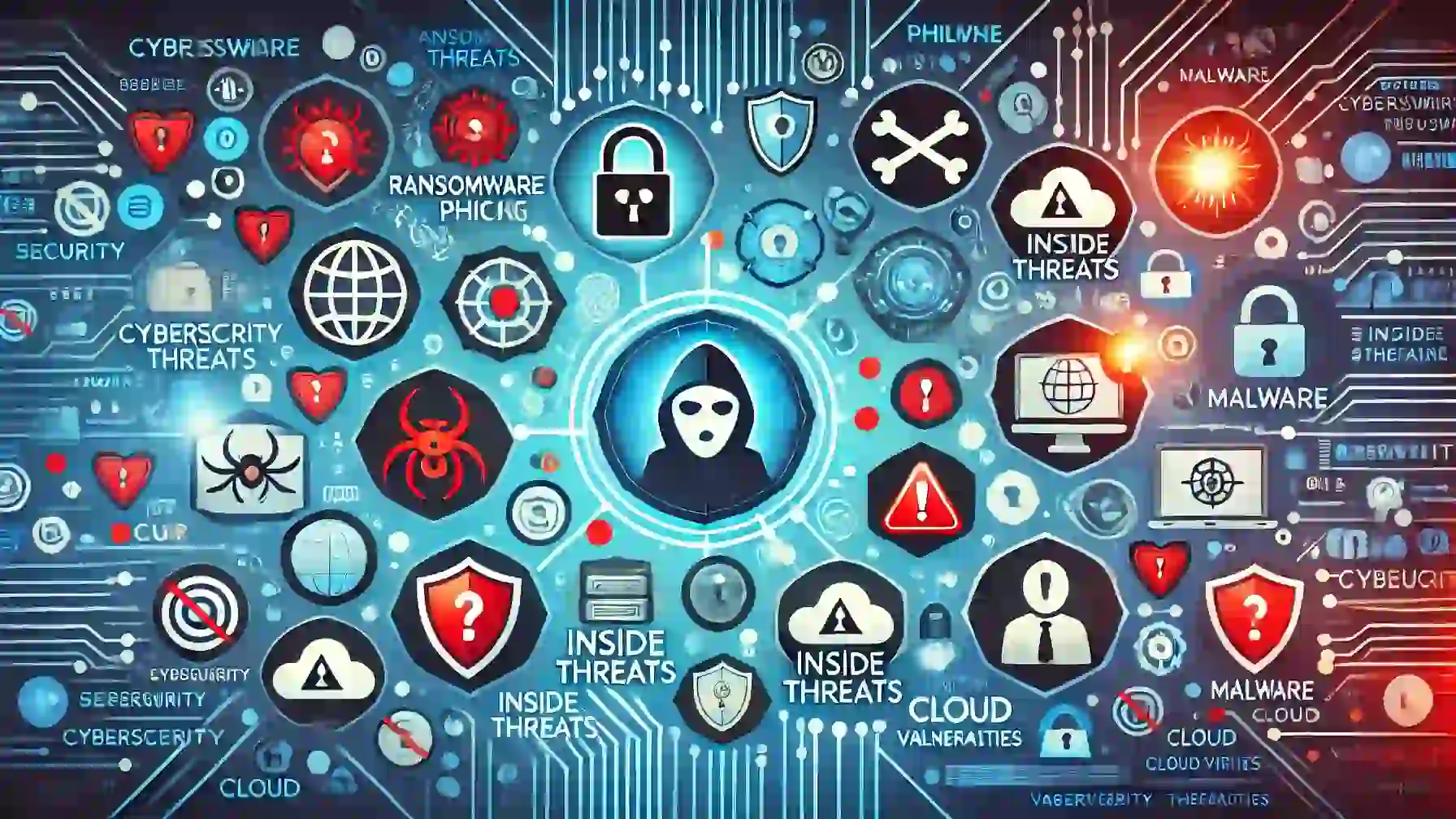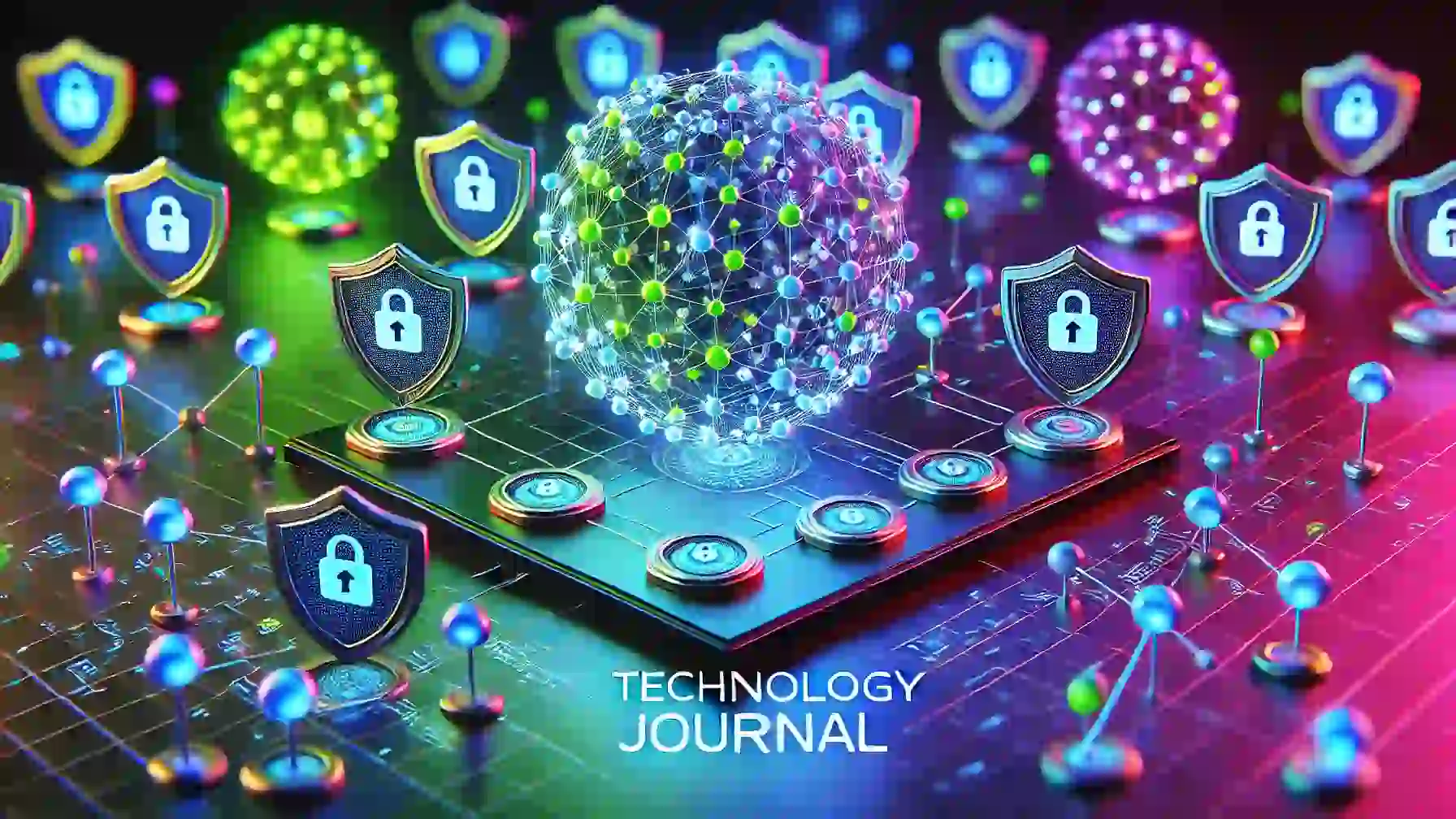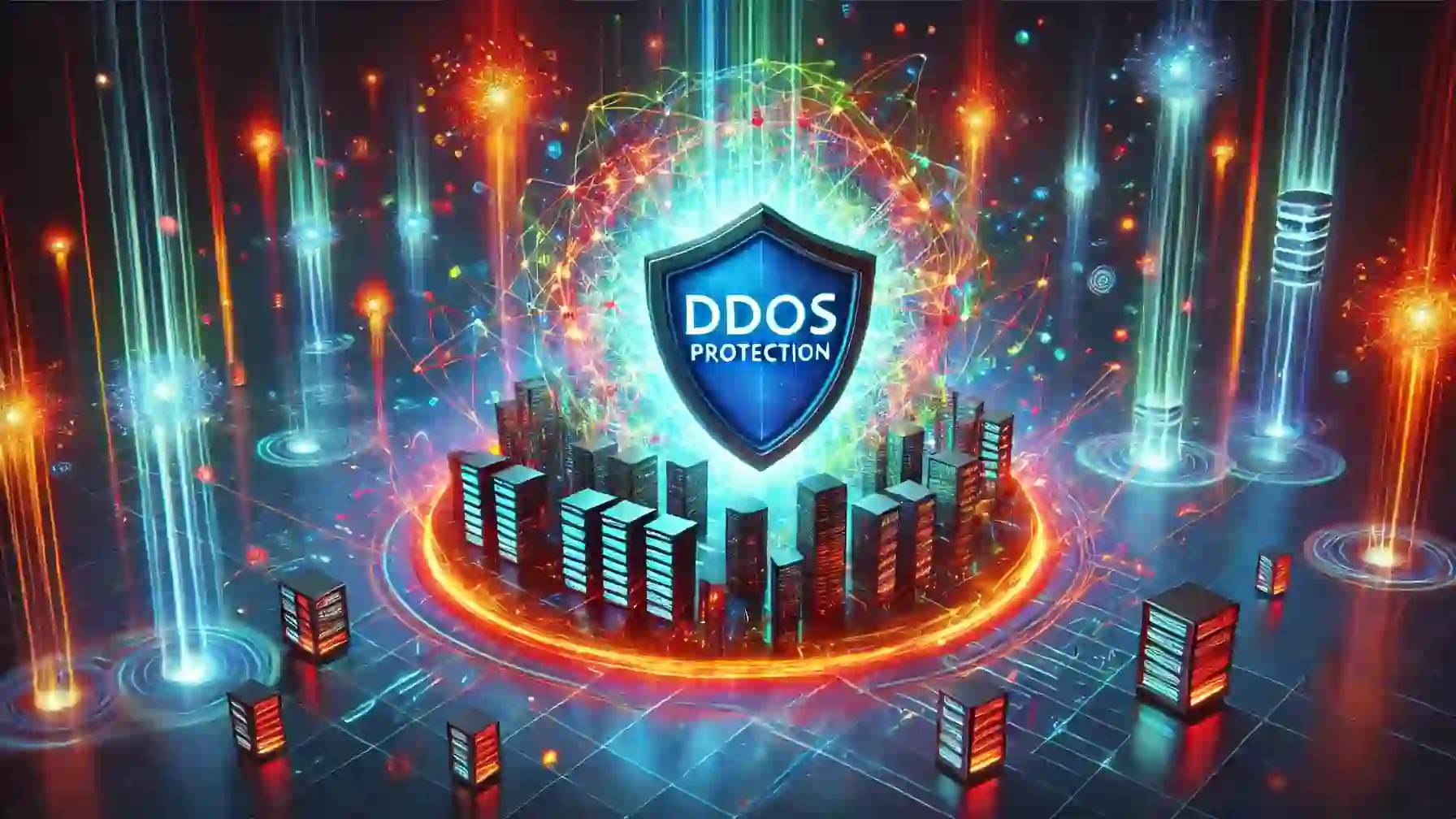In today’s interconnected world, cybersecurity threats are more prevalent than ever. Our growing reliance on technology and the internet is escalating these risks at an alarming rate. Whether it’s a large corporation, a small business, or an individual, no one is immune to a cyberattack. Understanding cybersecurity threats is crucial for anyone operating in the digital space today. Cyberattacks are becoming more sophisticated, making them harder to detect. Staying informed and prepared is more essential than ever. Ignoring cybersecurity risks can lead to severe financial losses, identity theft, data breaches, and reputational damage. Therefore, staying aware of emerging threats and taking proactive security measures is vital for navigating the digital landscape securely.
What are Cybersecurity Threats?
Cybersecurity threats refer to malicious actions designed to compromise or damage digital systems, networks, or data. These threats come in various forms, including malware, phishing, ransomware, and insider threats, to name just a few. Essentially, a cybersecurity threat is anything that can exploit a vulnerability in a computer system to perform unauthorized actions. Such actions can include stealing sensitive data, manipulating files, or gaining access to restricted systems.
For example, a cybersecurity threat could be a phishing attack where hackers send fake emails to deceive individuals into revealing their login credentials. On the other hand, malware might infect a system, silently collecting data or compromising files. Some cyber threats, like ransomware, are particularly dangerous because they can lock entire networks or systems until a ransom is paid.
Also Read: The Ultimate Cybersecurity Solutions for Small Businesses
The scope and scale of cybersecurity threats have grown in recent years. Now, they are not limited to isolated incidents or small businesses but are targeting massive organizations and even government entities. While technology evolves to make life more convenient, cybercriminals are evolving just as quickly to exploit these advancements. This constant battle between attackers and defenders underscores the need for continuous vigilance in managing cybersecurity threats.
The importance of understanding Cybersecurity Threats:
Why should anyone be concerned about cybersecurity threats? The answer is simple: the consequences of ignoring them can be devastating. Every digital interaction, transaction, and communication involves some degree of risk. For individuals, a cyberattack can result in identity theft, financial fraud, or exposure of private information. For businesses, it can mean the loss of sensitive customer data, trade secrets, and intellectual property, potentially leading to crippling lawsuits, regulatory penalties, and even closure.
Moreover, cybersecurity threats are not static; they are always evolving. This means that the methods hackers use today will look different tomorrow. Ransomware attacks, once considered rare, are now a regular occurrence. Phishing attempts are also becoming more sophisticated. They are often difficult to distinguish from legitimate communication. Staying updated on the types of cyber threats is crucial for protection. Understanding how these threats operate helps organizations and individuals. This knowledge allows them to take preemptive measures and avoid becoming the next victim.
It is not just large corporations that are affected. Small and medium-sized businesses are often targeted because they lack the robust security infrastructure of larger companies. As a result, understanding these cybersecurity threats isn’t just important—it’s essential for survival in today’s digital world.
Top Cybersecurity Threats in 2024:
As we move further into the digital age, the types of cybersecurity threats we face are becoming more diverse and dangerous. The following are the top threats predicted to dominate in 2024:
Ransomware Attacks
Ransomware remains a top cybersecurity threat, and in 2024, it is only expected to become more prevalent. This form of malware works by encrypting a victim’s files and demanding payment in exchange for the decryption key. Ransomware attacks can cripple entire organizations, shutting down operations until the ransom is paid. One of the most significant challenges with ransomware is that paying the ransom does not guarantee the safe return of the data. Additionally, cybercriminals are increasingly employing a “double extortion” technique, threatening to publicly release sensitive data if the ransom is not paid.
Phishing and Social Engineering
Phishing attacks exploit human psychology to trick individuals into revealing personal information, such as passwords or financial details. In 2024, phishing is expected to remain one of the most effective forms of cybersecurity threats because it targets the weakest link in any security system—people. Cybercriminals are becoming better at crafting emails and messages that appear legitimate, often impersonating trusted contacts or official organizations. This method, known as social engineering, manipulates victims into clicking on malicious links or downloading infected attachments.
Malware and Viruses
Malware is a broad category that includes various types of malicious software, such as viruses, worms, and trojans. These programs infiltrate computer systems with the goal of causing damage, stealing data, or gaining unauthorized access. The threat of malware is constantly growing, with new variants being developed every day. What makes malware so dangerous is that it can operate undetected for long periods, slowly collecting data or spreading across networks. Without robust antivirus software and regular system scans, it is easy for malware to gain a foothold in a system.
Insider Threats
Insider threats occur when individuals within an organization intentionally or unintentionally compromise security. These threats can be particularly challenging to detect because the malicious activity often comes from employees, contractors, or trusted partners who have authorized access to the system. Insider threats can be intentional, such as when a disgruntled employee leaks sensitive information, or accidental, like when an employee unknowingly falls for a phishing scam. The impact of insider threats can be devastating, often leading to significant data breaches or financial loss.
Cloud Vulnerabilities
With the increasing adoption of cloud services, cloud vulnerabilities are emerging as a major concern. While cloud providers implement stringent security measures, many businesses fail to understand that securing data in the cloud is a shared responsibility. Misconfigurations, weak access controls, and improper data management can all create gaps that cybercriminals can exploit. As organizations continue to migrate to the cloud, ensuring proper security measures are in place is critical to minimizing cybersecurity threats.
Ransomware: A Rising Concern
Ransomware is one of the fastest-growing cybersecurity threats in the world today. In fact, ransomware attacks have increased by more than 300% in the last five years alone. These attacks target individuals, businesses, and even critical infrastructure sectors such as healthcare and government services. The reason ransomware is so effective is simple: victims are often willing to pay large sums to regain access to their systems or data. Moreover, with ransomware-as-a-service (RaaS) platforms becoming widely available, it is now easier than ever for amateur hackers to launch ransomware attacks without extensive technical knowledge.
One notable example is the 2021 Colonial Pipeline ransomware attack, which caused fuel shortages across the East Coast of the United States. This attack highlighted how vulnerable essential services can be to ransomware, and it serves as a warning for what’s to come in 2024. To combat ransomware, businesses need to focus on employee training, regular backups, and strict access control policies. By implementing these measures, they can minimize the damage should an attack occur.
Phishing: Tricking the Human Element
Phishing is a type of social engineering attack. It uses deceptive communication to trick individuals into revealing sensitive information. Attackers may also manipulate victims into performing actions that benefit them. The most common phishing technique involves sending fraudulent emails. These emails appear to come from legitimate sources like a trusted bank or a colleague. Typically, they contain a link or attachment. Once clicked, it installs malware on the victim’s device or redirects them to a fake website. This fake site is designed to capture login credentials or other sensitive information.
What makes phishing such a persistent cybersecurity threat is its ability to target people rather than systems. While technology can detect and block some phishing attempts, human error remains a vulnerability that cybercriminals continue to exploit. In 2024, phishing emails are expected to become even more sophisticated, using artificial intelligence (AI) to create highly personalized attacks that are nearly impossible to differentiate from genuine communication.
To defend against phishing, organizations must educate their employees on how to recognize phishing attempts and encourage them to report suspicious emails. Additionally, using email filters, two-factor authentication (2FA), and encryption can help prevent phishing attacks from succeeding.
Malware and Viruses: A Silent Enemy
Malware is a broad term that refers to any software designed to cause harm to a computer, server, or network. This includes viruses, trojans, worms, spyware, and more. Once installed, malware can wreak havoc on a system by stealing data, encrypting files, or allowing attackers to gain control of the system. In some cases, malware operates silently in the background, making it difficult to detect until significant damage has already been done.
One of the most dangerous aspects of malware is its ability to evolve. Malware authors are constantly creating new strains designed to evade detection by antivirus software and bypass traditional security measures. This makes it essential for businesses and individuals to stay up-to-date on the latest cybersecurity threats and implement comprehensive security measures, including regularly updating software, conducting system scans, and using firewalls.
In addition to using strong antivirus software, individuals and businesses should avoid downloading files or software from untrusted sources, as these are often how malware is distributed. Being cautious about email attachments, links, and downloads is a simple yet effective way to reduce the risk of malware infections.
Insider Threats: Dangers from within
Not all cybersecurity threats come from external hackers; some of the most damaging threats come from within an organization. Insider threats can be difficult to detect because they involve individuals who already have authorized access to sensitive data. These threats can come from disgruntled employees seeking revenge or from careless employees who unknowingly compromise security.
A real-life example of an insider threat is the case of Edward Snowden, a former contractor for the National Security Agency (NSA), who leaked classified information about global surveillance programs in 2013. While Snowden’s case involved intentional data leakage, many insider threats are unintentional, resulting from employees accidentally sharing sensitive information or falling for phishing attacks.
To prevent insider threats, organizations need to implement strict access controls, ensuring that employees only have access to the information they need to perform their jobs. Regular audits and monitoring of employee activity can also help detect unusual behavior early. Furthermore, fostering a positive work environment and providing employees with cybersecurity training can reduce the likelihood of intentional insider threats.
Cloud Vulnerabilities: Securing the Digital Sky
As businesses continue to adopt cloud computing services, they gain significant advantages in scalability, flexibility, and cost savings. However, this shift also introduces new cybersecurity threats, particularly when it comes to securing data in the cloud. Many businesses mistakenly believe that cloud providers are solely responsible for securing data, but the reality is that cloud security is a shared responsibility between the provider and the customer.

Cloud vulnerabilities can arise from misconfigurations, weak encryption practices, or improper access controls. For instance, if a business does not properly configure its cloud storage, sensitive data may be exposed to the public, creating a serious data breach risk. Similarly, if access controls are not enforced, unauthorized users may gain access to sensitive information.
To mitigate cloud-related cybersecurity threats, businesses should encrypt all data stored in the cloud. They should also use multi-factor authentication and regularly review cloud configurations to avoid vulnerabilities. Additionally, companies must conduct frequent security assessments to maintain protection. Working closely with cloud providers is essential for staying updated on best practices. This helps ensure a secure cloud environment and reduces the risk of cyberattacks.
The Role of AI and Machine Learning in Cybersecurity Threats:
Artificial intelligence (AI) and machine learning (ML) are transforming both the world of cyberattacks and cybersecurity defense. On the one hand, cybercriminals are increasingly using AI to launch more targeted and sophisticated attacks. For example, AI can be used to create convincing phishing emails or to analyze large amounts of data in order to find security vulnerabilities.
At the same time, AI is also becoming a powerful tool in defending against cybersecurity threats. AI-powered security systems can analyze patterns in network traffic and detect anomalies that could indicate an attack. Machine learning algorithms can learn from past attacks to improve the accuracy of threat detection and response.
As AI technology continues to advance, the battle between attackers and defenders will only intensify. Businesses that adopt AI-based security measures will have a better chance of staying ahead of cybercriminals, while those that do not may find themselves falling behind.
Zero-Day Attacks: Exploiting the Unknown
Zero-day attacks exploit vulnerabilities in software that are unknown to the vendor and have not yet been patched. These vulnerabilities are called “zero-day” because there are zero days between the discovery of the vulnerability and the attack that exploits it. Zero-day vulnerabilities are particularly dangerous because they leave systems defenseless against attacks until a patch is released.
In 2024, zero-day attacks are expected to become more frequent, as cybercriminals use advanced techniques to discover and exploit unknown vulnerabilities. High-profile zero-day attacks in recent years, such as the 2020 SolarWinds hack, have demonstrated the devastating impact these attacks can have on governments, businesses, and individuals alike.
To protect against zero-day attacks, businesses should adopt a proactive approach to cybersecurity. This includes regularly updating software, using intrusion detection systems, and staying informed about emerging threats. By implementing a multi-layered security approach, organizations can reduce the likelihood of falling victim to a zero-day attack.
Cybersecurity Threats Targeting Small Businesses:
Small businesses are particularly vulnerable to cybersecurity threats because they often lack the resources and expertise to implement robust security measures. Cybercriminals target small businesses because they know that these organizations are less likely to have the same level of protection as larger corporations. As a result, small businesses are increasingly falling victim to attacks such as ransomware, phishing, and data breaches.
Despite their limited resources, small businesses can take steps to protect themselves from cybersecurity threats. One of the most effective measures is to implement strong password policies and require multi-factor authentication for all users. Additionally, investing in basic security tools such as firewalls, antivirus software, and data encryption can significantly reduce the risk of an attack.
Employee training is another critical component of cybersecurity for small businesses. Employees should be educated on how to recognize phishing attempts, avoid downloading malicious software, and report suspicious activity. By fostering a culture of cybersecurity awareness, small businesses can mitigate the risk of an attack and ensure that they are better prepared to respond if one occurs.
How to create a Cybersecurity Plan?
Creating a comprehensive cybersecurity plan is essential for any organization that wants to protect itself from the growing number of cybersecurity threats. A good cybersecurity plan should include the following key components:
- Risk assessment: Begin by identifying potential threats and vulnerabilities. This will help you understand where your organization is most at risk and allow you to prioritize your security efforts.
- Security protocols: Develop clear guidelines for protecting sensitive data, including who has access to it and how it is stored.
- Incident response plan: Outline a strategy for responding to cyber incidents, including who is responsible for managing the response and how the organization will communicate with stakeholders.
- Employee training: Educate employees on best practices for cybersecurity, including how to recognize and report potential threats.
- Regular audits: Conduct regular security assessments to ensure that your cybersecurity plan is effective and that any vulnerabilities are addressed promptly.
By implementing a cybersecurity plan, organizations can proactively address cybersecurity threats and reduce the likelihood of falling victim to an attack.
The future of Cybersecurity Threats
The future of cybersecurity threats is both exciting and daunting. As technology continues to advance, so too will the methods used by cybercriminals. Emerging technologies such as artificial intelligence, 5G networks, and the Internet of Things (IoT) are expected to create new opportunities for cyberattacks. At the same time, businesses and individuals will need to adapt their security strategies to keep pace with these new risks.
One of the most significant challenges in the future will be keeping up with the speed and complexity of cyberattacks. As attackers become more sophisticated, traditional security measures such as firewalls and antivirus software may no longer be sufficient. Instead, organizations will need to adopt more advanced security tools, such as AI-powered threat detection systems and blockchain-based security solutions.
Additionally, the rise of remote work and digital collaboration tools is expected to create new vulnerabilities that cybercriminals can exploit. Organizations will need to ensure that their employees are equipped with the necessary tools and knowledge to protect themselves while working from home or on the go.
Ultimately, the future of cybersecurity threats will require a proactive, multi-layered approach to security. Businesses and individuals alike must stay informed about emerging risks and be prepared to adapt their security strategies as new threats arise.
Staying Vigilant in the Face of Cybersecurity Threats:
Cybersecurity threats are becoming more sophisticated and dangerous every year. From ransomware and phishing attacks to insider threats, the risks are numerous. Cloud vulnerabilities also add to the growing list of dangers. These threats are constantly evolving, making them difficult to predict and prevent. While eliminating all cyber threats is impossible, staying informed is crucial. Implementing a strong cybersecurity strategy can greatly reduce the chance of becoming a victim.
Understanding the different cybersecurity threats facing both businesses and individuals is essential. By taking proactive steps, we can better protect our digital assets. This helps ensure the safety and integrity of online activities. In the ever-changing landscape of cybersecurity, vigilance remains your best defense.
Frequently Asked Questions:
1. What is the most common cybersecurity threat?
Phishing attacks are currently one of the most common cybersecurity threats. These attacks rely on social engineering to trick users into revealing sensitive information, such as passwords or financial details.
2. How can I protect myself from phishing attacks?
To protect yourself from phishing attacks, avoid clicking on suspicious links, verify the sender’s identity before responding to emails, and use two-factor authentication for added security.
3. Why are small businesses targeted by cybercriminals?
Small businesses are often targeted because they tend to have weaker security measures compared to larger corporations. Cybercriminals see small businesses as easier targets.
Also Read: Understanding Latency in Digital Experience
4. What role does AI play in cybersecurity threats?
AI can be used by both attackers and defenders in cybersecurity. Cybercriminals use AI to launch more sophisticated attacks, while organizations use AI to detect and respond to threats in real time.
5. How can I improve my organization’s cybersecurity posture?
To improve your organization’s cybersecurity, implement strong password policies, use multi-factor authentication, train employees on cybersecurity best practices, and conduct regular security audits.








